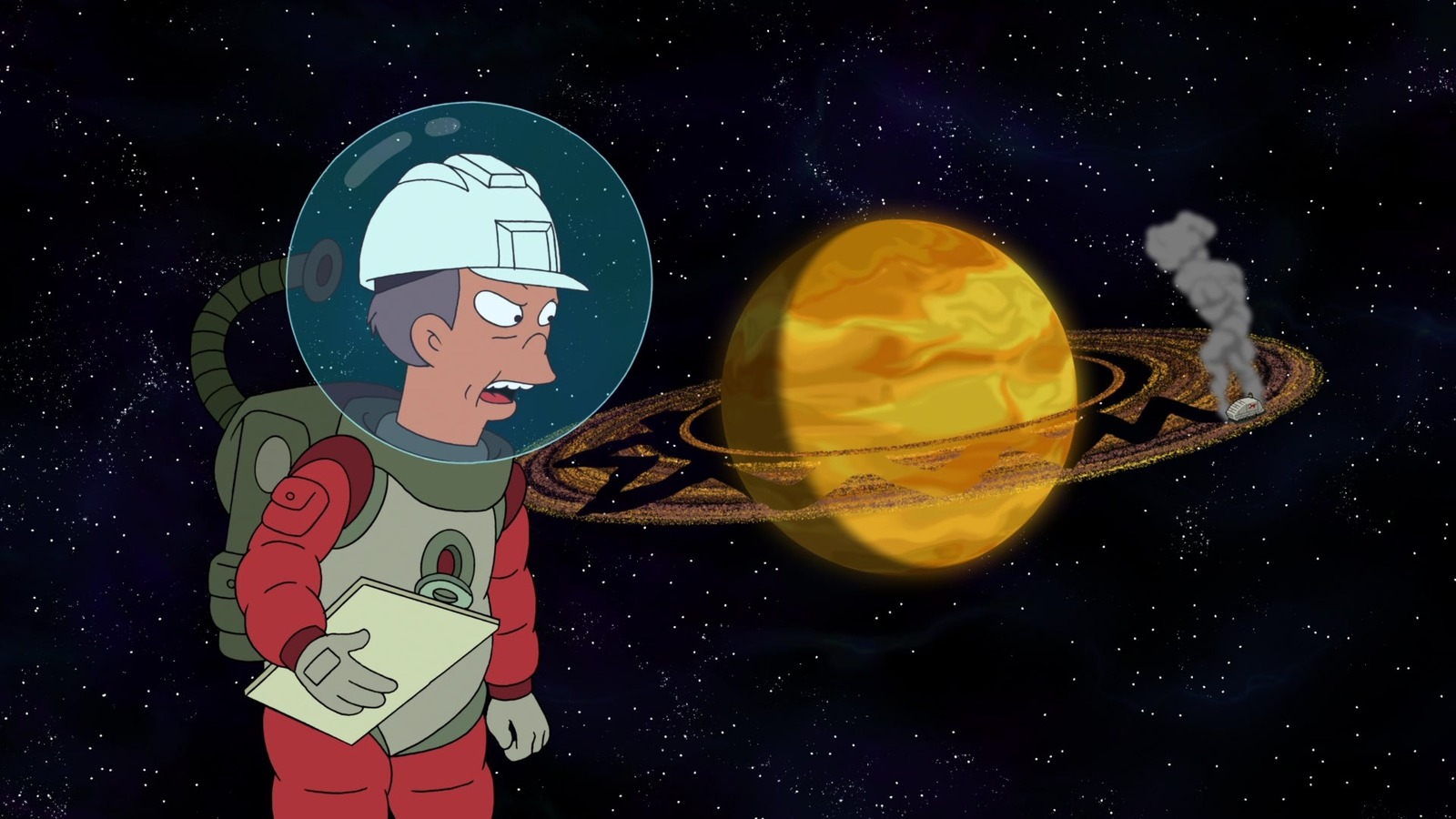Of course, “2001: A Space Odyssey” is one of the best films of all time, and maybe one of the most famous, so any and all sci-fi stories likely owe the Kubrick/Arthur C. Clarke story a debt. Cohen was open about the influence, saying:
“A little bit of inspiration, as you’ll see at the end, from ‘2001.’ Not that we ripped off too much, but just a little bit of the visuals at the end. That, I would say, would be one of the greatest sci-fi movies of all time. Aside from that, that’s the main one.”
Naturally, this isn’t the first time “Futurama” referenced “2001: A Space Odyssey.” To cite only one other example: in the episode “A Bicyclops Built for Two” (March 19, 2000), the main characters logged into the internet — a vast VR experience in the future — and were greeted by Richard Strauss’ “Also Sprach Zarathustra.” Fry (West) whispered “My God. It’s full of ads!,” a reference to Dave (Keir Dullea) saying “My God, it’s full of stars” in “2001.”
The end of “Into the Wild Green Yonder” sees the lush asteroid reach a level of biodiversity that causes the entire planetoid to transform. It becomes a massive sperm, flies toward the violet dwarf star, fertilizing it. The fertilized star quickly gestates and hatches into an Encyclopod. The Encycolpod is a massive cosmic stingray that has the DNA of billions of endangered species encoded in villi on its stomach. It’s a living DNA vault.
The cosmic “hatching” was essentially the Star Child from “2001.” Clearly, Cohen wanted to tell a sci-fi story on a massive scale, reaching into the fabric of life and its place in the cosmos. “Green Yonder” may not be as profound as “2001,” but it is undeniably funnier.
